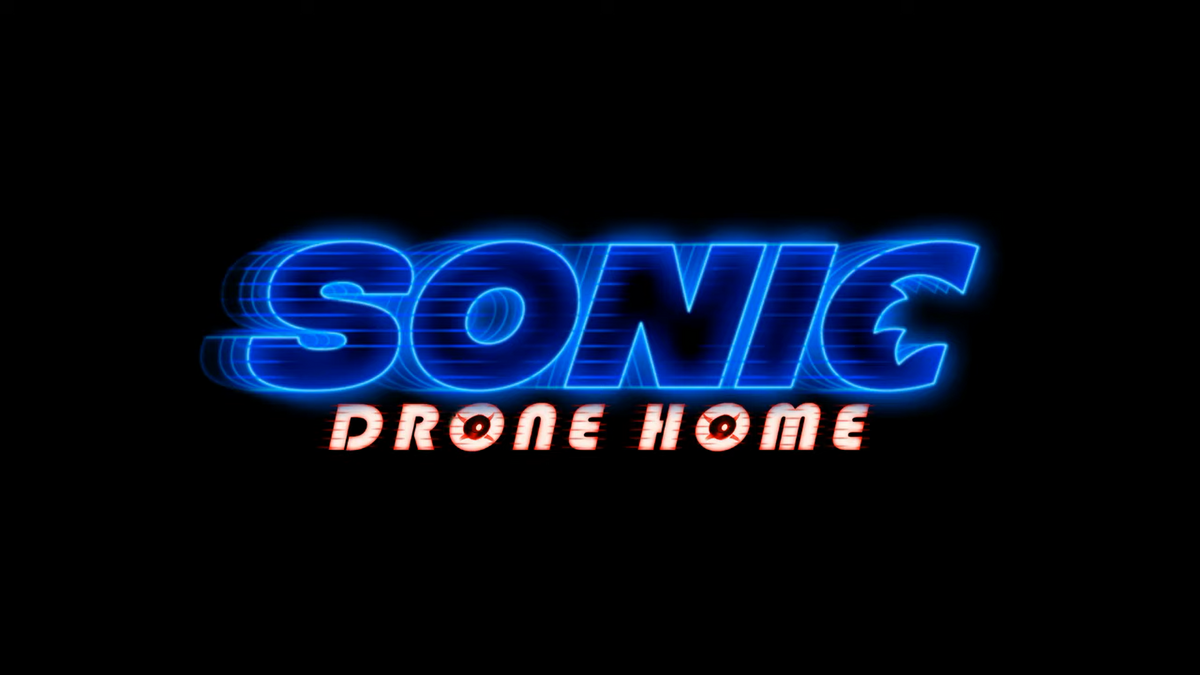Sonic Drone Home represents a fascinating convergence of drone technology, acoustic sensing, and smart home automation. This innovative concept promises to revolutionize home security, environmental monitoring, and even user interaction, offering a glimpse into a future where homes are not only smarter but also more acutely aware of their surroundings. The implications, however, extend beyond mere convenience, raising crucial questions about data privacy, security vulnerabilities, and ethical considerations.
This exploration delves into the core technological components of a sonic drone home, analyzing its potential benefits and drawbacks. We will examine the various sensor technologies involved, the design of a user-friendly interface, and the critical security protocols needed to protect user data and ensure system integrity. Furthermore, we will consider the environmental impact and ethical implications of widespread adoption, offering insights into responsible development and deployment strategies.
Sonic Drone Homes: A Technological and Societal Exploration
The concept of a “sonic drone home” represents a fascinating intersection of drone technology, advanced sensing, and home automation. This article delves into the potential, challenges, and implications of this emerging field, exploring its technological underpinnings, security considerations, user experience, environmental impact, and ethical dimensions.
Defining “Sonic Drone Home”
A sonic drone home integrates autonomous drone technology with a smart home system, utilizing acoustic sensors and other technologies to monitor and interact with the home environment. This concept can encompass various interpretations, from simple drone-based security systems to sophisticated platforms managing energy consumption, environmental control, and even home maintenance. The “sonic” aspect highlights the use of sound-based technologies for data acquisition and interaction, though other sensor modalities can certainly be incorporated.
Examples of contributing technologies include advanced acoustic sensors (capable of detecting leaks, intrusions, or structural issues), LiDAR for 3D mapping and navigation, computer vision for object recognition, and machine learning for data analysis and predictive maintenance. Potential applications range from automated security patrols and leak detection to delivering packages and providing remote home monitoring capabilities.
Security Aspects of Sonic Drone Home Technology

The integration of drones into the home environment introduces new security vulnerabilities. Unauthorized access to the drone control system, data breaches from sensors, and potential physical damage to the drone itself are all concerns.
Mitigating these vulnerabilities requires a multi-layered approach. This includes robust encryption protocols for data transmission, secure authentication mechanisms for user access, and physical security measures to protect the drone from tampering. Regular software updates and penetration testing can also help identify and address potential weaknesses.
Implementing robust security protocols necessitates a comprehensive strategy incorporating hardware and software security measures. This could involve employing tamper-evident seals on the drone’s components, utilizing secure boot processes to prevent unauthorized code execution, and implementing intrusion detection systems to monitor for suspicious activity.
| Security Measure | Description | Effectiveness | Vulnerabilities |
|---|---|---|---|
| Encryption | Data encryption during transmission and storage. | High, if strong encryption algorithms are used. | Weak encryption keys, vulnerabilities in encryption algorithms. |
| Authentication | Multi-factor authentication for user access. | High, reduces unauthorized access. | Phishing attacks, compromised credentials. |
| Intrusion Detection | Software and hardware monitoring for suspicious activity. | Moderate, depends on the sophistication of the system. | Advanced evasion techniques, false positives. |
| Physical Security | Tamper-evident seals, secure storage. | High, prevents physical tampering. | Sophisticated physical attacks, environmental factors. |
Technological Components of a Sonic Drone Home

A sonic drone home system relies on several core technological components working in concert. These include the drone itself (equipped with various sensors and communication capabilities), a central control unit (managing data processing and decision-making), a network infrastructure (for communication between the drone, control unit, and other smart home devices), and a user interface (allowing for interaction and monitoring).
Different sensor technologies offer varying capabilities. Acoustic sensors are effective for detecting leaks and intrusions, while LiDAR provides precise 3D mapping. Computer vision enables object recognition and tracking, while other sensors, such as temperature and humidity sensors, can contribute to environmental monitoring.
The conceptual architecture could be visualized as a distributed system. The drone acts as a mobile sensor node, transmitting data wirelessly to a central hub (likely within the home’s network infrastructure). This hub processes the data, makes decisions based on pre-programmed rules or machine learning models, and interacts with other smart home systems. The user interface provides a centralized point of control and monitoring.
User Experience and Interface Design, Sonic drone home

An ideal user interface should be intuitive, user-friendly, and provide a clear overview of the system’s status. Real-time data visualization, customizable alerts, and easy access to control functions are crucial elements.
- Real-time drone status display
- Interactive 3D map of the home environment
- Customizable alerts for specific events
- Remote control functionality for the drone
- Data visualization and reporting tools
The user experience should emphasize ease of use and intuitive navigation. The interface should be accessible to users with varying levels of technical expertise, providing clear visual cues and straightforward controls.
Environmental Impact and Sustainability

Widespread adoption of sonic drone homes could lead to increased energy consumption and electronic waste. However, the potential for energy efficiency gains through optimized environmental control and reduced maintenance needs should be considered.
Minimizing the environmental footprint requires focusing on sustainable materials, energy-efficient drone designs, and responsible end-of-life management of electronic components. The use of renewable energy sources to power the drone and the home automation system is also crucial.
Sustainable design principles can be incorporated by using recycled materials in drone construction, optimizing energy consumption through efficient flight patterns and sensor usage, and designing for modularity and repairability to extend the lifespan of components.
Ethical Considerations
The use of sonic drone homes raises several ethical concerns, including privacy violations, potential misuse for surveillance, and the potential for algorithmic bias in decision-making processes.
Potential misuse could include unauthorized surveillance, data breaches leading to identity theft, and the deployment of the drone for malicious purposes. The development and deployment of these systems should prioritize user privacy and data security.
Responsible development requires establishing clear guidelines for data usage, implementing robust security measures, and conducting thorough ethical impact assessments. Transparency and user control over data collection and usage are also paramount.
Future Developments and Trends
Future developments in sonic drone home technology are likely to involve advancements in artificial intelligence, sensor technology, and communication protocols. The integration of more sophisticated AI algorithms will enable more autonomous and proactive home management.
The quiet hum of a returning sonic drone home is a welcome sound, contrasting sharply with the excitement surrounding sporting news. For instance, the recent signing of Tom Banton by the Brisbane Heat as reported on ESPN, Brisbane Heat sign Tom Banton as injury replacement – ESPN , highlights the different types of anticipation we experience. This contrast underscores how diverse our daily experiences can be, from the technological advancements represented by the drone to the human drama of professional sports.
Emerging technologies like 5G and edge computing will enhance the speed and reliability of data transmission, enabling real-time monitoring and control. The increasing miniaturization and affordability of sensors and drones will also contribute to wider adoption.
- 2025: Increased integration with other smart home systems.
- 2030: Widespread adoption of AI-powered predictive maintenance.
- 2035: Development of more sustainable and environmentally friendly drone designs.
- 2040: Integration with advanced robotics for home maintenance tasks.
The concept of a Sonic Drone Home presents a compelling vision of the future, blending advanced technology with the comfort and security of the home environment. While challenges remain in addressing security concerns, minimizing environmental impact, and navigating ethical considerations, the potential benefits are significant. Further research and development, focusing on robust security measures and sustainable design principles, will be crucial in realizing the full potential of this innovative technology and ensuring its responsible integration into our lives.
The concept of a “sonic drone home,” utilizing sound waves for navigation and control, presents intriguing possibilities for the future of automated dwellings. It’s a far cry from the recent televised mishap where, as reported in this article, James Corden forced to correct fellow Graham Norton Show guest , highlighting the occasional inaccuracies even in well-produced media. Returning to sonic drone homes, further research is needed to fully explore their potential benefits and challenges.
Expert Answers
What are the potential energy consumption implications of a sonic drone home?
Energy consumption will depend heavily on the specific components and usage patterns. Efficient power management strategies and the use of low-power sensors will be crucial to minimizing energy impact.
How can privacy concerns be addressed in a sonic drone home system?
Data encryption, secure data storage, and user control over data collection and sharing are essential for protecting user privacy. Transparency in data handling practices is also critical.
What is the cost of implementing a sonic drone home system?
The cost will vary widely depending on the scale and complexity of the system, the specific technologies employed, and the level of customization required. Initial costs will likely be substantial, but economies of scale could lead to reduced costs over time.
